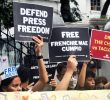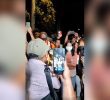By Ardee E. Delola
Taga-Mindanao ka pala. Hindi ba magulo doon?
This is a question I am commonly asked when a non-Mindanaoan learns I am from Mindanao. Of course, my natural response is to refute and provide a lengthy explanation that unrest is only limited to certain portions of the island although at the back of mind I cannot help but think how ignorant can this person be. I cannot blame them. For centuries, Mindanao is suffering from a tarnished image that causes fear, a Mindaphobia.
Mindaphobia is a state of mind first created by the Spaniards. It began with their coinage of the word “Moro”, a collective term for the thirteen ethno-linguistic Muslim tribes of Mindanao. According to Dr. Cesar Majul in his book Muslims in the Philippines, Moro was originally a derogatory label to early Mindanao natives who were likened to the Muslim Moors of North Africa (presently Morocco) who also resisted against Spain. Our history textbooks also describe the Moro people as pirates and looters without expounding that it was merely a baseless accusation by the Spaniards who failed to force them under their control.
While parts of Mindanao remained unconquered, the Spaniards built coral stone forts and watchtowers (now tourist attractions) across their coastal colonies in the country, marking the first great divide between the Moros and the rest of the Filipino people. In my travels, I also saw heritage churches that were apparently designed as a black propaganda against the Moro people. These include San Joaquin Church in San Joaquin, Iloilo that has a façade etched with images depicting the Battle of Tetuan between Spain and Morocco in 1860 and the Mosque-like edifice of St. Catherine of Alexandria Church in Carcar, Cebu that, according to locales, was meant to deceive the Moro people.
The American conquest of the Bangsamoro came swiftly. They simply included Moro territories under its sovereignty by virtue of the Treaty of Paris. The Moros again took up arms against the regime and it escalated into the Battle of Bud Dadoh in 1916 that saw the carnage of around 1,000 Moros in Jolo, Sulu.
More injustices were committed against them thereafter. This includes the Jabidah Massacre in 1968, which prompted the formation of Moro National Liberation Front whose internal faction later gave birth to the Moro Islamic Liberation Front.
Throughout the years, many negotiations between them and the government were forged but nothing seemed to fully address their overarching quest for self-determination. Ironically, every attempt at peace building only resulted to more armed conflict that, in turn, also deepened the stigma against Mindanao.
Most recent was the “mis-encounter” in Mamasapano, Maguindanao, which casted doubts about the sincerity of the government to grant autonomy to the Bangsamoro.
The exploitation of Mindanao also continues to afflict the Indigenous peoples who are also the original inhabitants of the island. Unlike the Moros who are represented by an armed political entity, they had to silently endure the long historical injustices and discriminations against them. They too were heavily displaced by the massive migration of land-grabbing foreign capitalists and feudal lords from Luzon and Visayas who turned their ancestral domains into sprawling plantations. They too are shedding tears for Mother Nature as large-scale and multi-national companies continue to indiscriminately haul minerals out of her land and abuse her rainforests and seas for their self-serving interests. They too are trembling in fear because of persistent militarization and violence by paramilitary groups and private armies in small towns and countrysides.
Mindanao is endowed with the largest and the richest natural resources in the Philippines yet majority of its tri-people, lowly Christian settlers included, are robbed of its blessing. Many are still landless and living in abject poverty. If you think about it, the struggles of Mindanaoans are not far from the struggles of the majority of the Filipino people. The problems that plague Mindanao form part of the broader and systemic political and socio-economic problems of our country. So I wonder that if the deeper wounds remain unhealed, will we ever achieve genuine and lasting peace?
Ardee Delola is a writer and producer for GMA Network Davao





![[ANALYSIS] A different drug war](https://davaotoday.com/wp-content/uploads/2024/09/1000019103-110x100.png)




